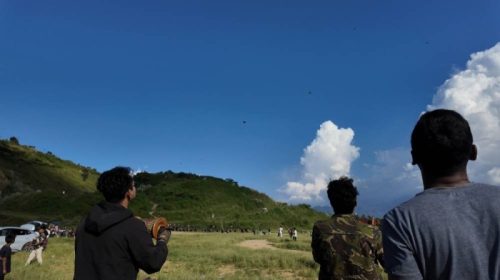Two notable events have emerged prominently in the last week in the country. The first one was the presentation of the plans and policies of the government in the Parliament duly highlighting socialism. The second was the release of a notable book on BP’s socialism and the local government.
A public debate on socialism was held in the capital with the public release of the aforementioned book by the first President of Republican Nepal, Ram Baran Yadav, at a programme chaired by Indira Thapa, the president of B P Koirala Socialist International Nepal (BPKSIN) and also a member of the Provincial Assembly as well as a former minister of economic affairs and planning. The book consists of articles by 27 national luminaries followed by interviews of eight mayors drawn from the length and breadth of the country. It has featured memorable and invaluable photographs of BP at the end.
Socialism appeared in the political arena following the dawn of democracy in Nepal after the Rana’s tyrannical rule was finally laid to rest way back in 1950. It had a meteoric rise as well as fall as it lasted for only a year and a half. Since then, it has been put in the back burner. Its mentor B P Koirala had highlighted it on several occasions. It has, however, not been implemented in its entirety, including by BP’s own brainchild, the Nepali Congress (NC).
But what is democratic socialism? One of the profusely quoted statements of BP about it has been mentioned by almost all the 27 writers directly or indirectly. It also features prominently on the back cover of the book. He said ‘Let every Nepali have one small home, a plot of land for their livelihood, a milch cow. Let the children go to school, let them get medical treatment. This is socialism in the context of Nepal’. He wrote in simple language to ensure that even a lay person knew about socialism.
BP had the unusual capacity of conveying the most complicated of themes in the simplest of language in a way understandable by commons and connoisseurs alike. For example, democracy, socialism and communism are not very easy to understand. But he made it very simple by saying that when democracy is taken out of socialism, communism emerges. When democracy is added to communism, socialism surfaces.
In fact, he arrived at this definition of socialism and communism after watching the events that were dominant in his times. Capitalism and communism professed by the United States and Soviet Union were at loggerheads with each other. BP thought that neither capitalism nor communism was suitable for Nepal. Whilst communism believed in class struggles following the dictates of Marxism, he believed in class coordination for the simple reason that struggle would lead to violence and coordination to peace.
Instead of two classes, he thought that there were three classes in Nepal – a few rich, more medium and many poor. He wanted to raise the economic condition of the poor so that they could enjoy middle economic standard. It is no wonder then that he told King Mahendra about his intent to transform the majority of poor people’s income to middle level like his own when asked about the development vision for Nepal.
For BP, democratic socialism was a mix of political freedom, economic equity and social justice. Political freedom comprised multi-party competition, fundamental rights, free press and the rule of law. Social justice meant poverty alleviation, education, health and employment opportunity. Economic equity would be obtained through land reforms.
He thus introduced land reforms which would provide ownership of land to the landless farmers. BP tried to make access to education and health free of cost or at a very small price which the people could afford. He also advocated for industrialisation, where large industries would be run by the government leaving the small ones to the private sector. This aspect has been mentioned by all the writers and interviewees, in general, and Dr Tulshi Gautam, in particular, in the book.
Unfortunately, democracy was strangled in its nascent stage by King Mahendra who banned all political parties. For this, he did not hesitate to keep the popularly-elected Prime Minister BP behind bars. King Mahendra, however, implemented his ideas, which is a kind of political plagiarism in the history of Nepal. For example, land reforms were carried out in the country by the King although not as successful as desired by BP.
BP’s party, the NC, formed the government with younger brother Girija Prasad Koirala as the Prime Minister after multi-party democracy was restored through a People’s Movement in 1990. But he privatised the government-owned industries on the pretext that they were functioning well. Even in this year’s plans and programmes, rogue industries running at a loss are being proposed for privatization, which is contrary to the spirit of BP’s socialism.
Education as well as health was thrown to the private sector, with the result that the rich opted for the costly private schools and hospitals mostly owned by the politicians. The poor have no option other than languishing in the government counterparts, which are merely in form but not in substance due to poor service delivery.
The commitment made in the constitution regarding the pursuance of socialism and also in every year’s plan and programme has thus been merely an exercise in hypocrisy. It is often parroted in discussions, debates and deliberations but is never implemented. Socialism has thus remained as a photograph of the little conserved but grossly neglected ruinous monuments. The BPKSIN deserves to be showered with innumerable praises for bringing out the much-needed album of BP’s socialism in Nepal.







